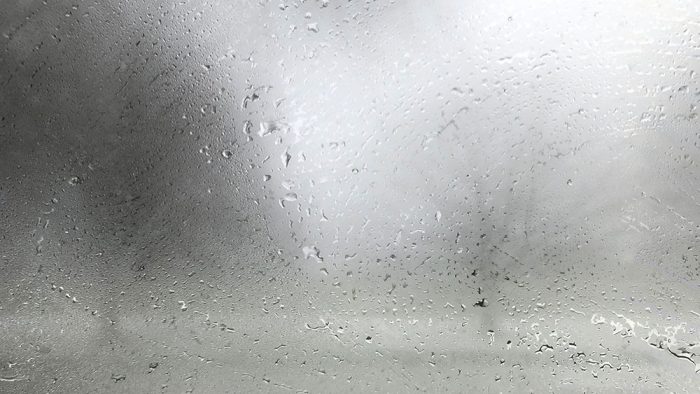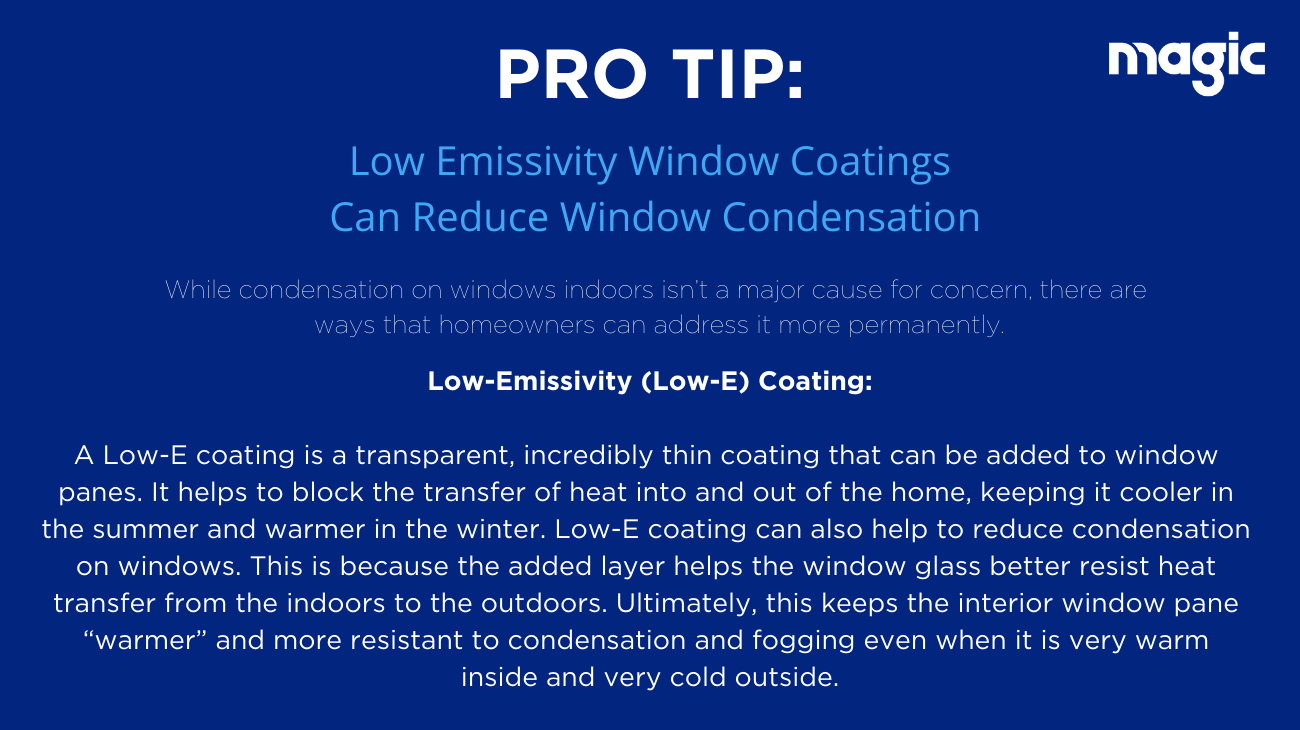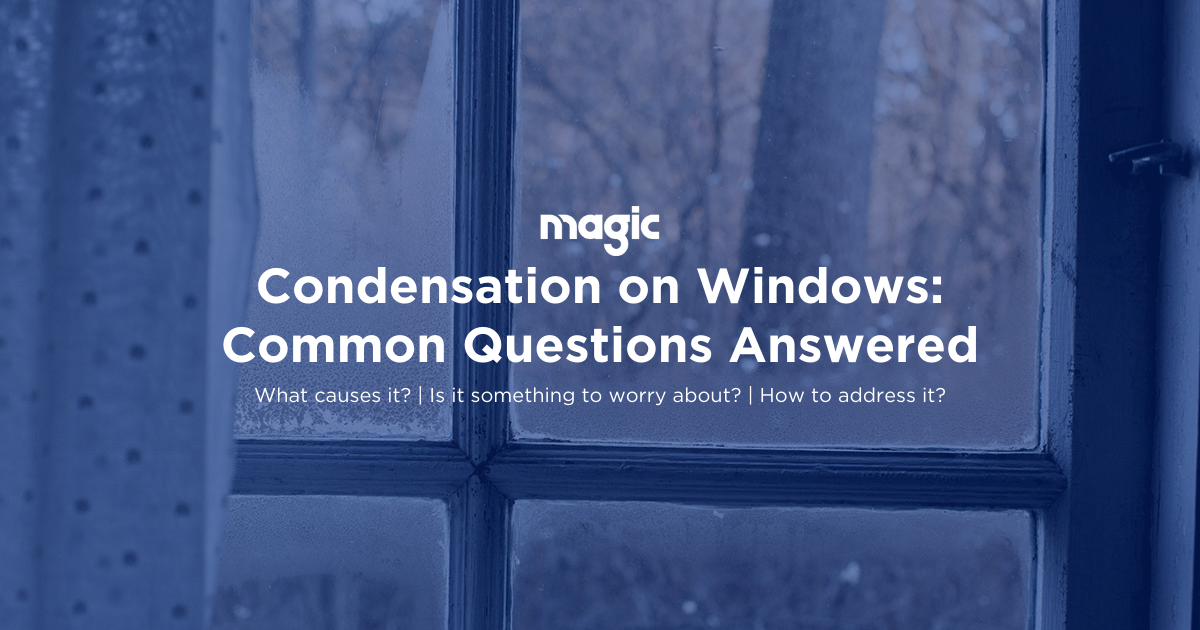Condensation on Windows: Common Questions Asked & Answered
Condensation on windows around the home is a common thing to see. That said, there can be a good deal of confusion regarding whether or not it should be a point of concern for homeowners. The simple answer? That largely depends on where the condensation is gathering. Read on to learn more about condensation on windows, as we answer some questions to help clear the confusion.
Have a specific question? Skip to the info you need!
- Why does condensation form on interior window surfaces?
- Does condensation on the inside of my windows mean the seal has failed?
- Are certain types of windows more susceptible to condensation than others?
- Is condensation on the inside of my windows something I should worry about?
- How can I reduce condensation on windows inside my home?
- Why does condensation form on exterior window surfaces?
- Does Low-E coating prevent condensation on exterior window surfaces?
- What happens when condensation forms in between my window panes?
- What should I do if condensation is forming in between my window panes?
Question: Why does condensation form on interior window surfaces?
Answer: Condensation forms on interior window panes due to the temperature difference between the warmer air in a home and the colder surface of the window glass. Warmer, humid air inside the home contains more moisture than colder air. When this warmer, moist air comes into contact with the cold surface of the window, it cools and condenses into liquid (hence the term condensation). This phenomenon is most noticeable in the wintertime, as it’s typically when there is the greatest difference between interior and exterior temperatures.

Question: Does condensation on the inside of my windows mean the seal has failed?
Answer: In the case of condensation on the inside or the outside of your windows, the answer is no. On the contrary, condensation in these areas is a sign that your window seals are working to lock air and moisture inside the home.
Question: Are certain types of windows more susceptible to condensation than others?
Answer: Because of their high thermal conductivity, aluminum windows are highly prone to interior condensation. This is especially true around the edges of the glass where it comes into contact with the aluminum frame. While condensation is still possible with vinyl frames in colder temperatures and in homes with high humidity, their lower thermal conductivity makes them more effective at reducing interior condensation.
Elsewhere, those with wood windows can run into potential issues if excess condensation seeps into the frames. This may lead to water damage over time if it’s not addressed properly.

Question: Is condensation on the inside of my windows something I should worry about?
Answer: In most instances, condensation on the interior of your windows is quite normal, especially during the winter months. That said, it can be an annoyance. In certain cases where condensation accumulates unchecked, the excess moisture can cause mould, mildew and water damage. Dealing with this excess moisture is as simple as wiping your window down to dry it off and reducing excess humidity inside the home. This brings us to our next question:
Question: How can I reduce condensation on windows inside my home?
Answer: Reducing condensation on windows can be done by lowering/controlling the amount of humidity (air moisture/vapour) in the air inside your home. Here are some simple solutions that may help:
- Use exhaust fans when showering, cooking and boiling water
- Use a dehumidifier and/or turn down your humidifier if you use one
- Ensure proper air circulation within the home

To Learn More About Low-E Coating, Check Out Our Window Energy-Efficiency Guide >>
Question: Why does condensation form on exterior window surfaces?
Answer: In a word? It’s dew! It appears when the temperature of the exterior window pane is lower than the air temperature and when there is high relative humidity in the air. This causes the water vapour in the air to condense into water. The appearance of exterior window condensation is most common in the early morning in fall or spring when warm days are followed by much cooler nights. When this does happen, the resulting dewdrops tend to disappear quickly when the sun warms the exterior window pane.

Question: Does Low-E coating prevent condensation on exterior window surfaces?
Answer: Interestingly, where Low-E Coated Glass can help to reduce window condensation indoors, using this added low-emissivity coating can actually lead to more condensation on exterior window panes. Because Low-E coating helps your windows panes trap more heat indoors, exterior window surfaces will more likely approach outdoor temperatures and drop below the dew point (the air temperature below which water vapour condenses into water).
Consequently, condensation is more likely to form on these exterior window surfaces if the conditions are right. But again, this is a sign that the Low-E coating is doing its job!
Question: What happens when condensation forms in between my window panes?
Answer: Unlike condensation on interior and exterior window surfaces, condensation in-between your window panes is a sign of a bigger problem.
To understand why it’s important to first understand that window units typically consist of two panes of glass (double-glazed) or three panes of glass (triple-glazed). These panes are set slightly apart from each other by means of spacers and sealed within the window frame. The space between the panes is then filled with noble gases such as krypton or argon, as these gases are very effective at impeding airflow.
These systems are called Insulated Glass Units (IGUs) and they are intended to seal the home against the outside as effectively as possible. Some heat transfer is inevitable depending on the type and quality of the windows, the quality of the installation and, as we’ve learned, whether or not performance-enhancing features such as Low-E coatings have been added.
If you notice condensation forming between the two panes of glass, it means the integrity of the window seal has been compromised and that water vapour is beginning to condense into water inside the window unit itself. This is quite common in:
- Newer homes with hollow vinyl PVC frames that can expand and contract drastically with weather fluctuations.
- Older homes with ageing windows.
While this may not seem like an issue at first, drafty and improperly sealed windows can lead to air leakage, energy waste and irreparably damaged windows.
Question: What should I do if condensation is forming in between my window panes?
Answer: Once you have carefully assessed the window and are positive that the condensation is indeed between the panes, it’s time to consider replacing the window altogether. Why not just replace the glass? Because seal failure is primarily caused by cheaper frames, such as ones made from unreinforced vinyl PVC frames or fibreglass. If the seal has failed in these types of cheaper window frames, it will fail again in the future. The solution? Go with a stronger, reinforced frame design.
Replacing an improperly sealed window is the best choice for your home (and your wallet) over the long term.
If it’s time to replace your windows, reach out today!
If you’re noticing persistent issues with your windows or you’re just looking to upgrade, book a free, no-hassle consultation with us today. One of our certified project managers will walk you through the window replacement process and explain the unique features and benefits behind our premium replacement windows.


